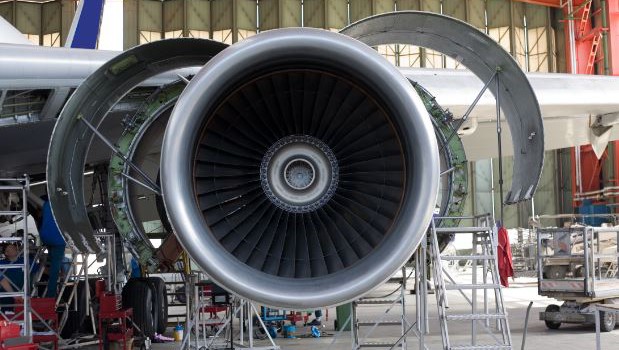Sofema Aviation Services www.sassofia.com looks at the Unique Responsibilities of the Aircraft Inspector – Subjective / Objective. To consider the difference between VI, GVI & DVI and EWIS SAGVI.
Over 80 percent of the inspections on large transport category aircraft are visual inspections.
Visual inspection is usually the most economical and fastest way to obtain an early assessment of the condition of an aircraft and its components.
Most of the defects found on aircraft are found by visual inspections, and the airframe manufacturers and users depend on regular visual inspections to ensure the continued airworthiness of their aircraft.
Consequently, it is important that visual inspection methods be understood and properly applied by those responsible for the continued airworthiness of aircraft.
********Personal Action Point********
What is the Difference between Visual Check & General Visual Check
Visual Check (VC or VCK) Operational / Visual Check (OP/VC or OPC/VCK).
A failure finding task to determine if an item is fulfilling its intended purpose.
General Visual Inspection (GVI) Functional Check / Inspection (FC /IN or /FNC)
Functional checks are a quantitative checks to determine if one or more functions of an item perform within specified limits. (Note Inspection is a Qualitative Task where judgement is employed to determine the degree of any finding)
Levels of MSG3 Inspection
There are three levels of MSG 3 inspections to determine if an item is fulfilling its intended purpose.
i. General Visual Inspection (GV or GVI)
ii. Detailed Inspection (DI or DET)
iii. Special Detailed Inspection (SI or SDI)
General Visual Inspection (GVI)
visual examination of an interior or exterior area, installation or assembly to detect obvious damage, failure or irregularity.
This level of inspection is made from within touching distance unless otherwise specified. A mirror may be necessary to enhance visual access to all exposed surfaces in the inspection area.
Detailed Inspection (DET)
An intensive examination of a specific item, installation or assembly to detect damage, failure or irregularity. Available lighting is normally supplemented with a direct source of good lighting at an intensity deemed appropriate. Inspection aids such as mirrors, magnifying lenses, etc. may be necessary. Surface cleaning and elaborate access procedures may be required.
Special Detailed Inspection (SDI)
An intensive examination of a specific item, installation, or assembly to detect damage, failure or irregularity. The examination is likely to make extensive use of specialized Inspection Techniques and/or equipment. Intricate cleaning and substantial access or disassembly procedure may be required.
Additional Considerations related to Electrical Wiring Interconnect Systems (EWIS)
Amongst the training requirements it is necessary to make Maintenance personnel aware of the need to ensure that aircraft EWIS should be maintained with the same level of intensity as any other system in the aircraft.
They also need to recognize that visual inspection of wiring has inherent limitations. Small defects such as breached or cracked insulations, especially in small gauge wire may not always be apparent. Changes have been made in the understanding of what constitutes a General Visual Inspection which is detailed here.
Effective wiring maintenance to deliver the required EWIS standard combines visual inspection techniques with improved wiring maintenance practices and training. To be effective this training is an ongoing and recurrent requirement most effective when it is delivered in the work place.
********Personal Action Point********
EWIS maintenance practices should contain a “protect, clean as you go” housekeeping philosophy. This requires, to be taken to protect wire bundles and connectors during work, and to ensure that all swarf, shavings, debris and other contamination are cleaned up after work is completed.
A Stand-alone General Visual Inspection (GVI): A GVI which is not performed as part of a zonal inspection. Even in cases where the interval coincides with the zonal inspection, the stand-alone GVI shall remain an independent step within the work card.
Note – The Stand Alone GVI becomes an essential element of the EWIS Inspection process for aircraft which are not managed in accordance with the requirements of MSG3. – explain.
Reasons why Inspection Does NOT “Always” Identify the Problem
1/ Inspection Documentation not available;
2/ Documentation not self-contained;
3/ Documentation not well-human-engineered;
4/ Documentation does not specify inspection strategy;
5/ Wrong, broken lighting used;
6/ Task Wrong choice of area /access;
7/ Missing access equipment;
8/ Inadequate access equipment;
9/ Inadequate body support during task;
10/ Poor posture for simultaneous manipulation and viewing;
11/ Difficulty handling light, mirror, Magnifier together;
12/ Wrong inspection area limits chosen;
13/ Incomplete search coverage by area,;
14/ Field of Vision (FOV) or fixation incomplete coverage due to time limitations;
15/ Fixation movement too far to ensure reliable inspection;
16/ Loss of situational awareness by area or FOV or fixation;
17/ Loss of Situational Awareness (SA) and coverage when finding indication stops search process;
18/ Defect location not recorded;
19/ Defect type not recorded;
20/ Defect comments not recorded;
21/ Defect location incorrectly recorded;
22/ Defect type incorrectly recorded;
23/ Defect comments incorrectly recorded.
Sofema Aviation Services provides more than 300 EASA Compliant Regulatory and vocational short courses for details please see www.sassofia.com or email: office@sassofia.com
Tags:
Aircraft Inspector, EASA Maintenance Inspection, MSG3 Inspection




